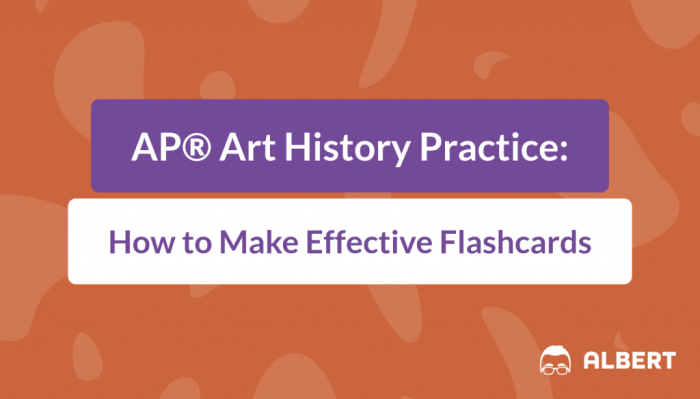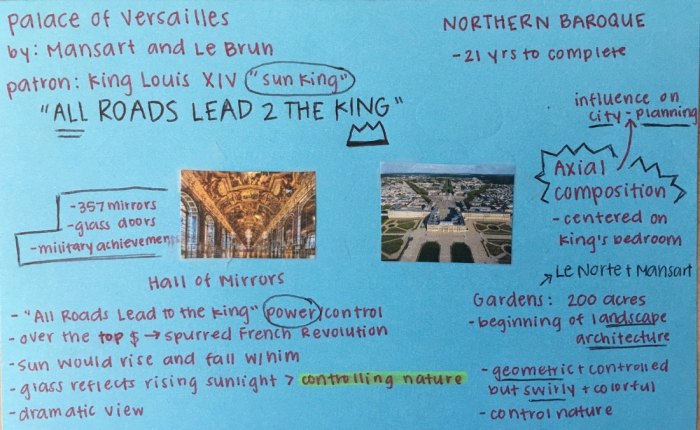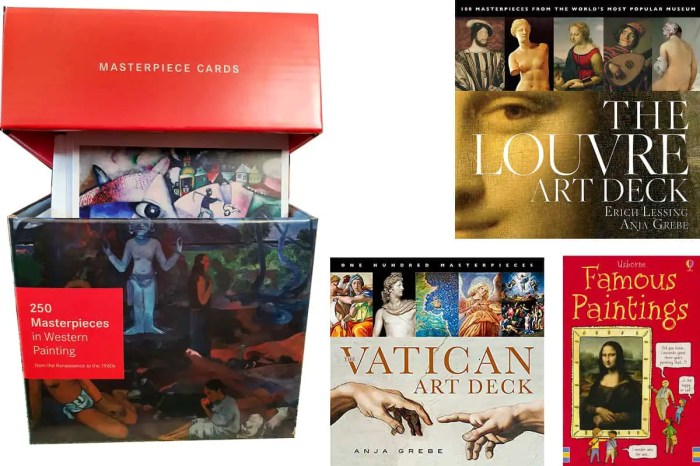Dive into the captivating world of art history with our comprehensive AP Art History 250 flashcards. These meticulously crafted study tools empower you to master key concepts, explore artistic movements, and conquer the exam with ease.
Our flashcards cover a wide range of topics, from ancient Egyptian hieroglyphics to contemporary installations, ensuring you gain a deep understanding of art’s evolution and significance.
Historical Context of AP Art History

The Advanced Placement (AP) Art History course is a college-level introductory course in the history of art offered in high schools worldwide. It is part of the AP Program, which allows high school students to take college-level courses and earn college credit while still in high school.
The AP Art History exam was first developed in 1972 by the College Board, a non-profit organization that develops and administers standardized tests and curriculum frameworks for K-12 education. The exam was created to provide high school students with an opportunity to demonstrate their knowledge and understanding of art history and to earn college credit for their work.
Goals and Objectives, Ap art history 250 flashcards
The goals of the AP Art History course are to:
- Develop students’ understanding of the history of art from ancient times to the present.
- Introduce students to the major works of art and the artists who created them.
- Help students develop their critical thinking skills and their ability to analyze and interpret works of art.
- Prepare students for further study in art history or related fields.
Significance of Art History
Art history is a field of study that examines the history of art and its relationship to the cultures and societies that produced it. Art history is a valuable field of study because it helps us to understand the human experience and the ways in which people have expressed themselves through art throughout history.
The AP Art History curriculum covers a wide range of topics, including the history of painting, sculpture, architecture, and photography. The course also examines the different styles and movements in art history, from the Renaissance to the present day.
When you’re immersed in studying AP Art History 250 flashcards, it’s easy to get lost in the nuances of art history. To take a break, why not explore the world of music theory? All major scales in bass clef provides a comprehensive overview of the fundamental scales used in music.
After this musical interlude, you can return to your AP Art History 250 flashcards with a refreshed perspective.
Course Content and Structure

The AP Art History course delves into the fascinating world of art, exploring various artistic movements, periods, and styles that have shaped human civilization. It is organized into units and modules that guide students through a chronological journey of art history.
Units and Modules
The course is divided into four units:
- Ancient World
- Medieval, Renaissance, and Baroque Art
- Modern Art
- Contemporary Art
Each unit is further subdivided into modules, focusing on specific art forms, themes, and historical contexts.
Types of Artworks
The course encompasses a wide range of artworks, including:
- Paintings: Masterpieces from diverse periods, such as the Renaissance and Impressionism
- Sculptures: From ancient Greek statues to modern abstract forms
- Architecture: Iconic buildings that reflect architectural styles from Gothic to contemporary
- Other Media: Including ceramics, textiles, and photography
Through the study of these diverse artworks, students gain a comprehensive understanding of the evolution and impact of art throughout history.
Exam Format and Assessment

The AP Art History exam is a comprehensive evaluation of your knowledge and skills in the subject. It consists of two sections:
- Section I: Multiple Choice (50%)
- 80 multiple-choice questions (60 minutes)
- Covers a wide range of art historical periods and styles
- Tests your knowledge of art terminology, concepts, and visual analysis
- Section II: Essay (50%)
- Three essay prompts (90 minutes)
- Requires you to analyze and interpret works of art based on specific criteria
- Tests your ability to write clearly and concisely about art history
The exam is scored on a scale of 1 to 5. The multiple-choice section is worth 50% of your score, while the essay section is worth the other 50%. To earn a passing score, you must demonstrate a strong understanding of art history and the ability to analyze and interpret works of art.
Strategies for Preparing for the Exam
Preparing for the AP Art History exam requires a combination of effective study methods and the right resources. Here are some strategies to help you succeed:
- Attend class regularly and take notes.Your instructor will provide valuable insights and guidance.
- Review your notes and textbook regularly.This will help you retain the information you learn in class.
- Use flashcards or other study tools to memorize important terms and concepts.
- Practice analyzing works of art.The more you practice, the better you will become at identifying and interpreting the elements of art.
- Take practice exams.This will help you familiarize yourself with the format of the exam and identify areas where you need to improve.
Flashcard Creation and Usage
Flashcard Creation and Usage
Flashcards are a valuable study tool for AP Art History, offering numerous benefits for students.
Selecting Relevant Information
Effective flashcards condense key information from the course material. Focus on essential concepts, definitions, and visual details that are likely to appear on the exam.
Organizing Content
Organize flashcards logically, grouping related information together. Consider using different colors or symbols to categorize different types of content (e.g., periods, artists, artworks).
Spaced Repetition
Spaced repetition involves reviewing flashcards at increasing intervals. This technique helps strengthen memory and improves long-term retention.
Active Recall
Active recall involves actively retrieving information from memory without looking at the answer. This process forces the brain to work harder, leading to better understanding and recall.
Additional Resources and Support

Online resources and study materials for AP Art History are abundant. Websites like Khan Academy, The Art Institute of Chicago, and Smarthistory provide comprehensive content, videos, and practice tests. YouTube channels like Crash Course and The Art Assignment offer engaging and accessible video lessons.
Connect with Teachers, Mentors, or Peers
Connecting with teachers, mentors, or peers can provide invaluable support. Teachers can clarify concepts, offer guidance, and provide feedback. Mentors can share their experiences and insights. Study groups with peers allow for collaborative learning and discussion.
Time Management and Effective Study Habits
Effective time management is crucial. Create a study schedule that allocates specific time slots for AP Art History. Utilize flashcards, practice tests, and review sessions to reinforce learning. Active recall techniques, such as self-testing and explaining concepts to others, enhance retention.
Breaks and rewards can help maintain focus and motivation.
Common Queries: Ap Art History 250 Flashcards
What are the benefits of using flashcards for AP Art History?
Flashcards provide a convenient and effective way to memorize key concepts, recall information quickly, and improve your overall understanding of art history.
How should I organize my flashcards?
Categorize your flashcards by artistic movements, periods, or themes. This structure will enhance your ability to connect and retain information.
What is the best way to use flashcards for studying?
Implement spaced repetition techniques by reviewing your flashcards at increasing intervals. Active recall, where you try to recall information from memory without looking at the card, is also highly effective.